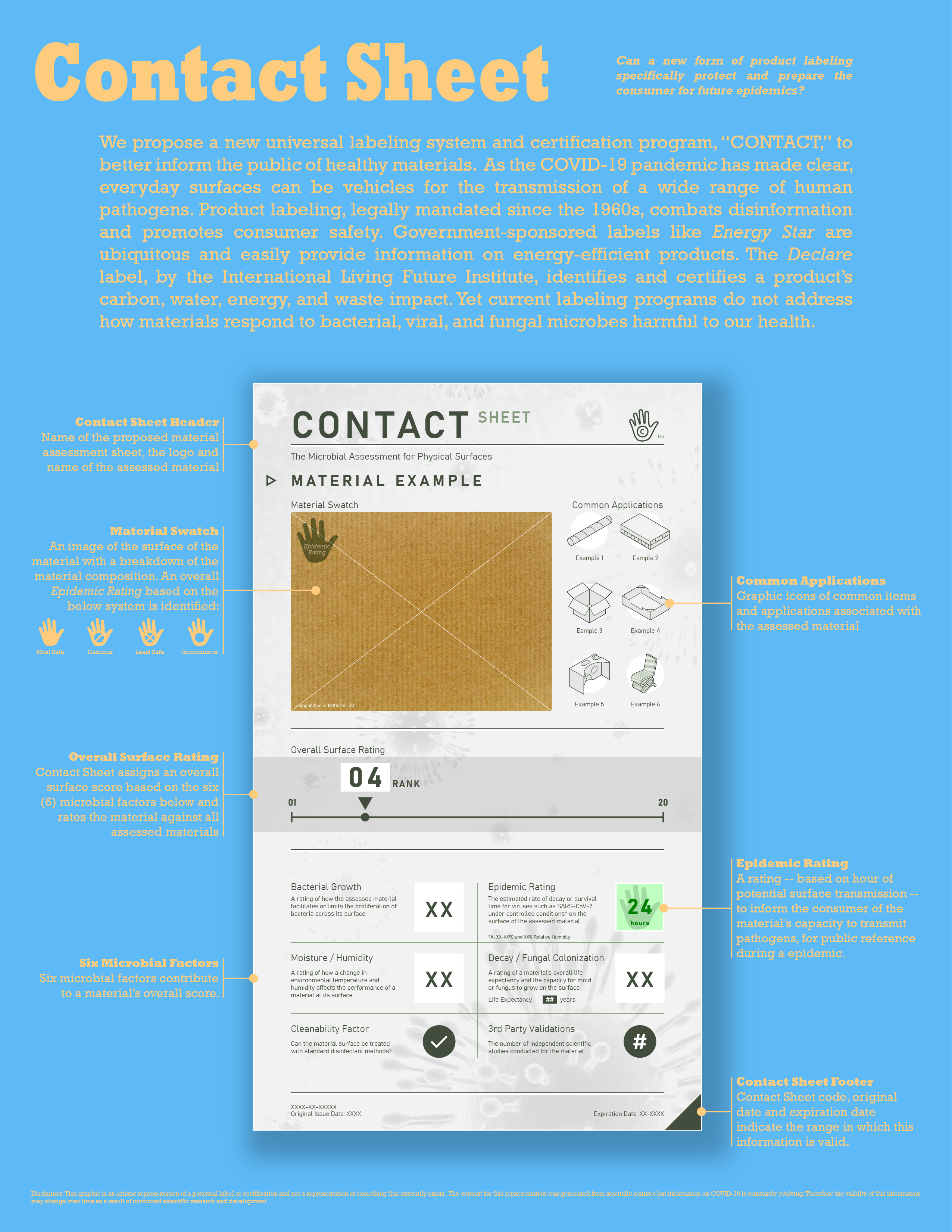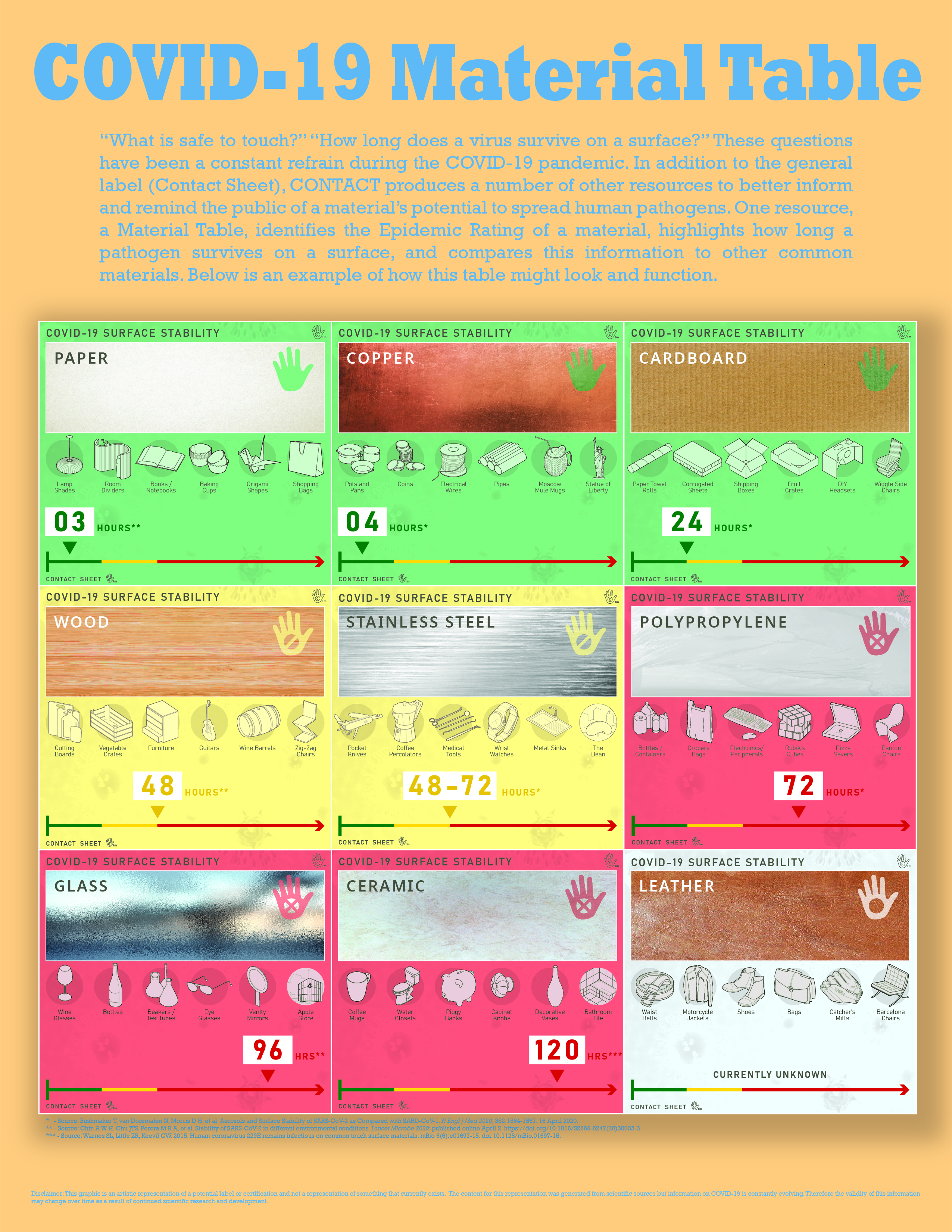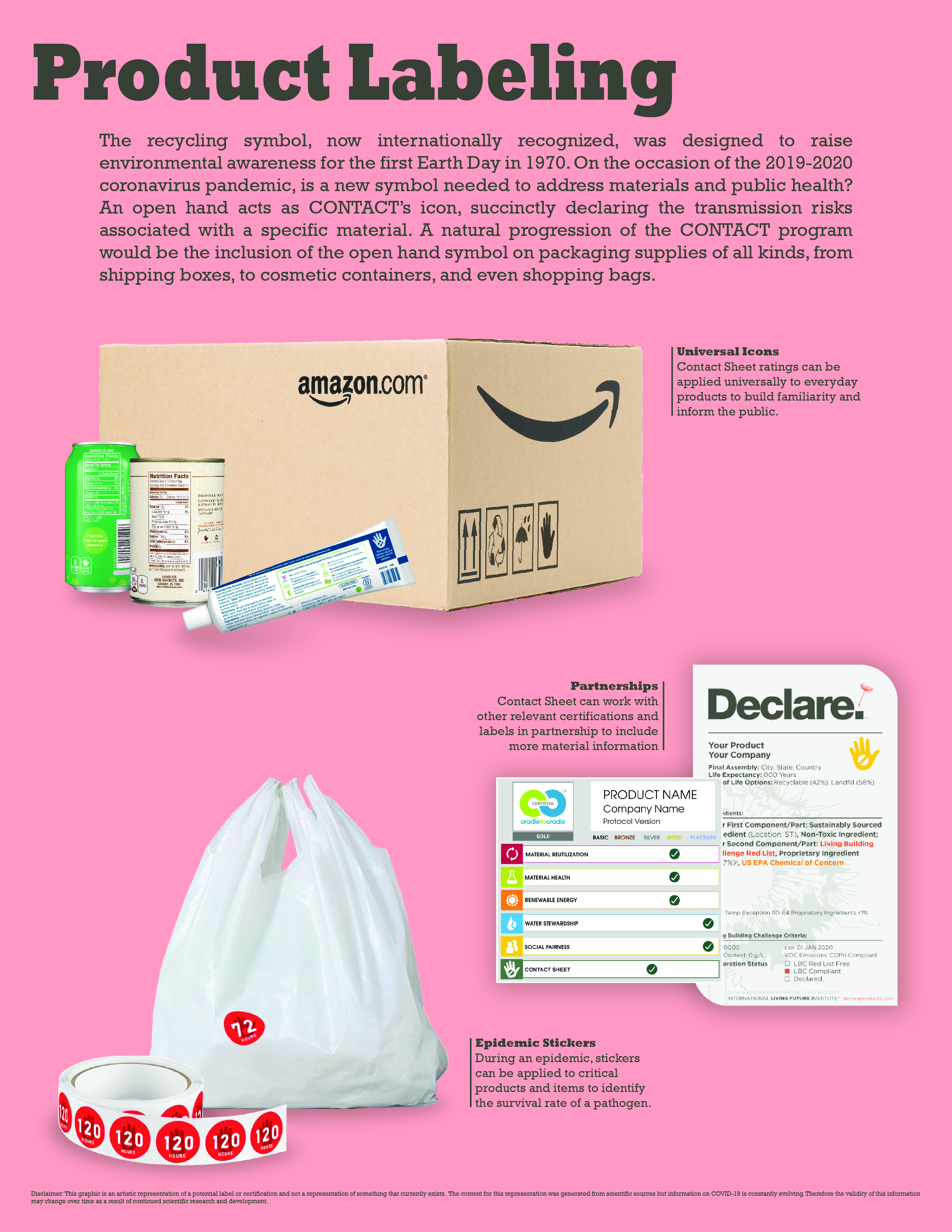Sharon Davis
We propose a new universal labeling system and certification program, ?CONTACT,? to better inform the public of healthy materials. As the COVID-19 pandemic has made clear, everyday surfaces can be vehicles for the transmission of a wide range of human pathogens. Product labeling, legally mandated since the 1960s, combats disinformation and promotes consumer safety. Government-sponsored labels like Energy Star are ubiquitous and easily provide information on energy-efficient products. The Declare label, by the International Living Future Institute, identifies and certifies a product?s carbon, water, energy, and waste impact. Yet current labeling programs do not address how materials respond to bacterial, viral, and fungal microbes harmful to our health.
?What is safe to touch?? ?How long does a virus survive on a surface?? These questions have been a constant refrain during the COVID-19 pandemic. In addition to the general label (Contact Sheet), CONTACT produces a number of other resources to better inform and remind the public of a material?s potential to spread human pathogens. One resource, a Material Table, identifies the Epidemic Rating of a material, highlights how long a pathogen survives on a surface, and compares this information to other common materials. Below is an example of how this table might look and function.
The recycling symbol, now internationally recognized, was designed to raise environmental awareness for the first Earth Day in 1970. On the occasion of the 2019-2020 coronavirus pandemic, is a new symbol needed to address materials and public health? An open hand acts as CONTACT?s icon, succinctly declaring the transmission risks associated with a specific material. A natural progression of the CONTACT program would be the inclusion of the open hand symbol on packaging supplies of all kinds, from shipping boxes, to cosmetic containers, and even shopping bags.


